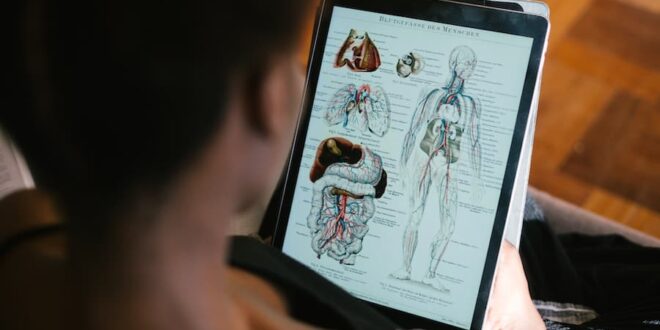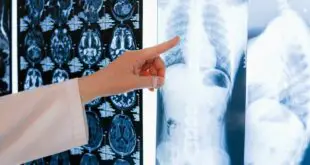A common question among science enthusiasts and curious learners is, what is the most common lever in the human body?
The human body is incredibly complex, with many systems and structures working together to enable movement.
Among these systems is the musculoskeletal system, which provides support, stability, and mobility.
Within this system, the bones act as levers, and the joints serve as fulcrums, allowing for the movement and manipulation of limbs and other body parts.
This article aims to help you understand how joints in the human body work as levers. Let’s start by answering the question,
What Is The Most Common Lever In The Human Body?
The most common lever in the human body is the third-class lever. The force is positioned in the center, while the load and fulcrum are at opposite ends.
Examples of third-class levers in the human body include using the palm to lift a weight, a football using the legs, fingers to pick up objects, or a shovel.
Joints And Levers In The Human Body
To comprehensively understand joints and levers in the human body, you first need to understand what each term means.
A joint is a connection between two or more bones held in place by ligaments to allow movement and flexibility in the body.
On the other hand, a lever is a straightforward machine comprising three components: the load, the force, and the fulcrum.
The load is the weight, the force is the effort applied to move the load, and the fulcrum is the pivot point around which the lever operates.
Now that you understand what a joint and a lever are, let’s discuss their role in the human body.
In the context of the human body, bones act as the lever arms, joints act as the fulcrum, and muscles act as the force to move loads.
Three classes of levers in the human body based on the arrangement of the muscles and joints include.
1st Class Lever
A 1st class lever is a type where the fulcrum is in the middle, with the load and the force applied on either side.
In the human body, first-class levers are relatively rare, but one notable example is the joint between the skull and the atlas vertebrae of the spine.
In this joint, the atlas vertebrae serve as the fulcrum, while the weight of the skull acts as the load, and the muscles and ligaments provide the force. This arrangement allows for precise movements and adjustments of the head.
2nd Class Lever
In 2nd -class lever, the load is positioned in the middle, while the force and fulcrum are on the sides. As such, the force is applied away from the load, resulting in a mechanical advantage.
An example of a second-class lever is the heel joint, where the upper body provides resistance or serves as the load, the heel acts as the fulcrum, and the muscle generates force by contraction.
In this case, pushing off with our toes creates a force that propels our body forward.
3rd Class Lever
The force is in the middle of the fulcrum and the load. Third-class levers are the most common lever type found in the human body.
An example of a third-class lever is the elbow joint, where the biceps muscle acts as the force, the elbow joint acts as the fulcrum, and the load is the weight being lifted or moved. The biceps muscle exerts a force on the forearm bone, causing it to bend at the elbow joint.
Principles Of Lever System
A lever helps make work easier by reducing the force needed to move an object or lift a load by increasing the distance over which the force acts.
Instead of applying a large force over a short distance, a lever spreads the effort over a longer distance, making the task more manageable.
When two equal forces act in opposite directions on a uniform lever at equal distances from the fulcrum, they balance each other, creating a state of equilibrium in the lever.
However, suppose two unequal forces act in opposite directions. In that case, the force acting at a longer distance from the fulcrum will have a greater effect on the lever’s movement than the force acting at a shorter distance.
So how does the principle of lever systems apply to our bodies? When you flex your elbow, your biceps muscle acts as the force, while your forearm bone is the lever arm.
The elbow joint acts as the fulcrum. The biceps muscle generates force over a relatively short distance to lift the load (your hand and any object you may be holding) at a greater distance from the fulcrum. And if you can remember, this is the 3rd class lever system.
Similarly, when you perform a calf raise, the muscles exert force to lift your body (the load) onto your toes.
The ball of your foot acts as the fulcrum, and the effort arm is the distance between the fulcrum and the calf muscles’ point of attachment.
Understanding lever principles in the human body is vital for physical therapists, athletes, and anyone interested in biomechanics.
It helps optimize movement techniques, prevent injuries, and enhance performance in sports and daily activities.
Advantages of Third-Class Levers
Favors speed – One advantage of using a third-class lever in certain applications is its ability to increase speed. The larger force applied by the effort results in the load traveling further.
As the load travels a greater distance, its speed is also multiplied. It can be particularly beneficial in situations where time is of the essence.
Precise movements – Third-class levers offer a finer degree of control and precision. With the load moving over a greater distance with less effort, you can delicately adjust the position or angle of the load.
Limitations of Third-Class Levers
One limitation of a third-class lever is that it requires more force to move an object than first and second-class levers. Third-class levers are designed to be speed multipliers rather than force multipliers.
The mechanical advantage of a lever is determined by the ratio of the distance from the fulcrum to the point where the input force is applied to the distance from the fulcrum to the point where the output force is applied.
In a third-class lever, the input force is closer to the fulcrum than the output force, resulting in a mechanical disadvantage. As a result, you need more force to overcome this disadvantage and move an object using a third-class lever.
Biomechanics Of Human Movements
Human movement results from the delicate and precise coordination between various components of the musculoskeletal system, such as bones, muscles, ligaments, and joints.
The nervous system controls this complex mechanical interaction, and occurs under gravity and other external loads.
The musculoskeletal system plays a vital role in enabling us to perform everyday activities such as walking, lifting, and reaching.
However, any injury or damage to any individual elements within the musculoskeletal system can disrupt this mechanical interaction.
An injury, whether a bone fracture, a ligament tear, or a muscle strain, can significantly impact movement.
The body’s ability to function optimally is compromised, resulting in degradation, instability, or even complete disability of movement.
For example, if there is a fracture in one of the bones involved in a joint, it can disrupt the alignment and stability of that joint.
Moving that joint can make it difficult or painful, limiting the range of motion and potentially affecting overall mobility.
Similarly, if a muscle is strained or torn, it may not be able to contract or relax properly, leading to weakness or loss of strength in that area.
Conclusion
Now you know the answer to the question, what is the most common lever in the human body? After extensive research and analysis, it is evident that the most common lever in the human body is the third-class lever.
The bones of the human body act as levers, working in conjunction with the muscles to allow for movement and mobility.
The lever system allows us to perform various activities, from simple walking and running to more complex movements like throwing and lifting.
The skeletal system provides the necessary support and structure for these levers to function efficiently.
Understanding the role of levers in the human body is crucial in fields such as anatomy, physiology, and biomechanics, as it helps us understand the mechanics behind human movement.
 Being Human
Being Human





